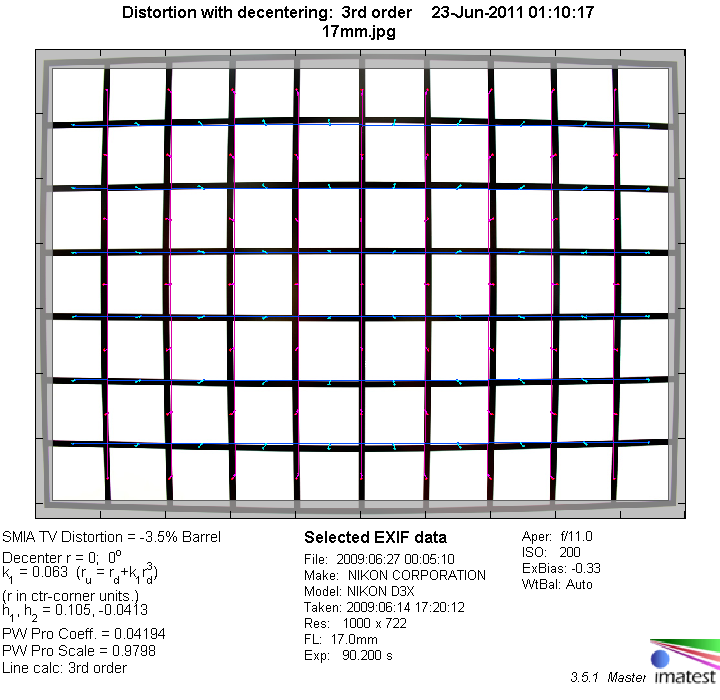|
Page 2 of 3

Distortion
The lens shows a significant amount of barrel distortion at the short end. Zooming in, the distortion decreases to a moderate level at 21mm. Around 28mm most of the image is free of distortion, but extreme corners already show some stretching as first signs of beginning pincushion distortion, which is fully developed and can be disturbing again at 35mm.
|
Move the mouse cursor over the focal length text marks below to observe the respective distortion
|
| 17mm |
21mm |
28mm |
35mm |
|

|
The chart above has a real-world size of about 120x80cm.
Vignetting
The lens produces significant light falloff towards the corners at its widest setting, especially at large apertures. As usual stopping down further helps to reduce the issue.
At all other focal lengths, vignetting is less pronounced, but still easily visible wide open. Again, stopping down reduces the amount of light fall-off to less disturbing levels.
We're performing our vignetting analysis based on
(uncorrected) JPEGs straight from the camera. The JPG engine of the Nikon D3x features a rather flat
gradation curve, thus has a moderate contrast characteristic, resulting in comparatively low vignetting figures - the
corresponding Canon figures are roughly 40% higher due to the more
aggressive default contrast setting.

MTF (resolution)
The lens delivers exceptionally high resolution figures in the image center when slightly stopped down. Towards the short end of the zoom range, image sharpness is excellent already with wide open aperture and still very good at 28mm and 35mm.
The image borders start a bit softer wide open, but increase to very good resolution stopped down to f/4 or f/5.6 (at 35mm). At 28mm, the borders already very good sharpness wide open already.
The extreme corners struggle on the large FX sensor to deliver acceptable sharpness wide open, especially towards the short end of the zoom range. Stopped down considerably, however, the lens produces very good sharpness here, too.
Please note that the MTF results are not directly comparable across the different systems!
Below is a simplified summary of the formal findings. The chart shows line widths
per picture height (LW/PH) which can be taken as a measure for sharpness.
If you want to know more about the MTF50 figures you may check out the corresponding
Imatest Explanations

Chromatic Aberrations (CAs)
The level of lateral CAs (color shadows at harsh contrast transitions) is moderate towards the short end of the zoom range, reaching peak values of below 2 pixels. At 28 and 35 mm the amount of CAs is significantly lower.
CAs can easily be corrected in software or by the camera itself (most modern Nikon DSLRs remove CAs themselves if you shoot JPGs).

|